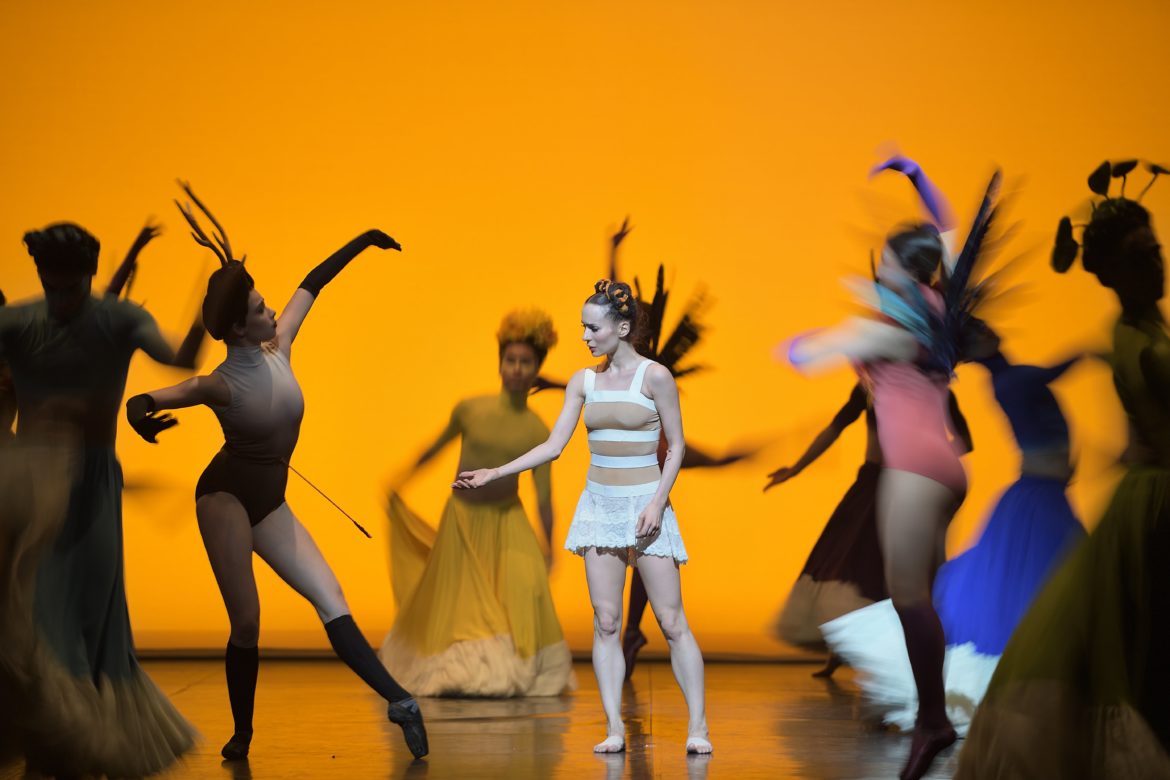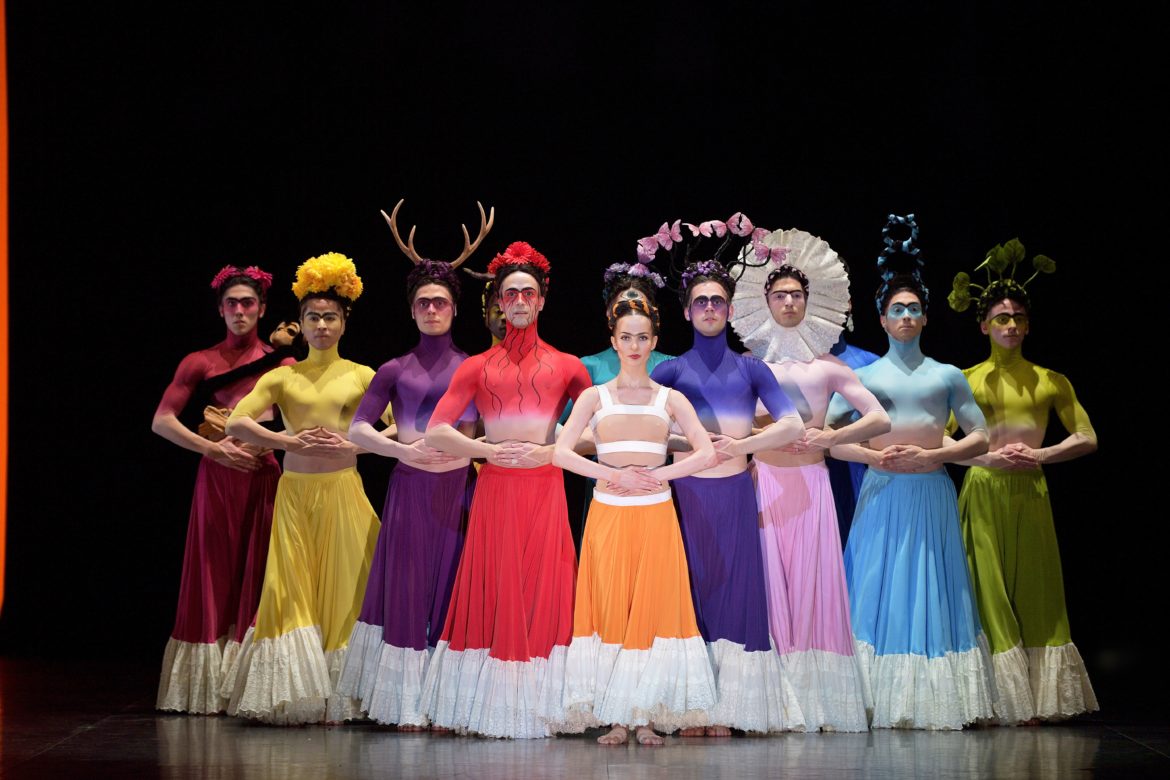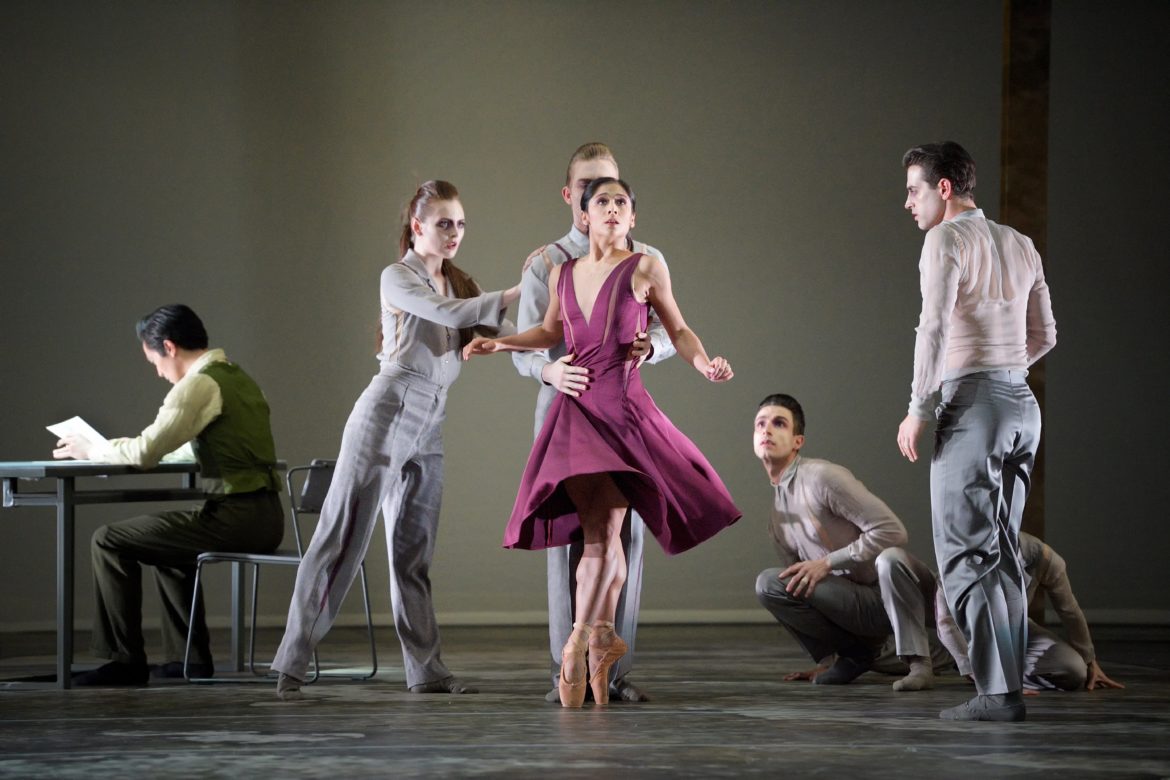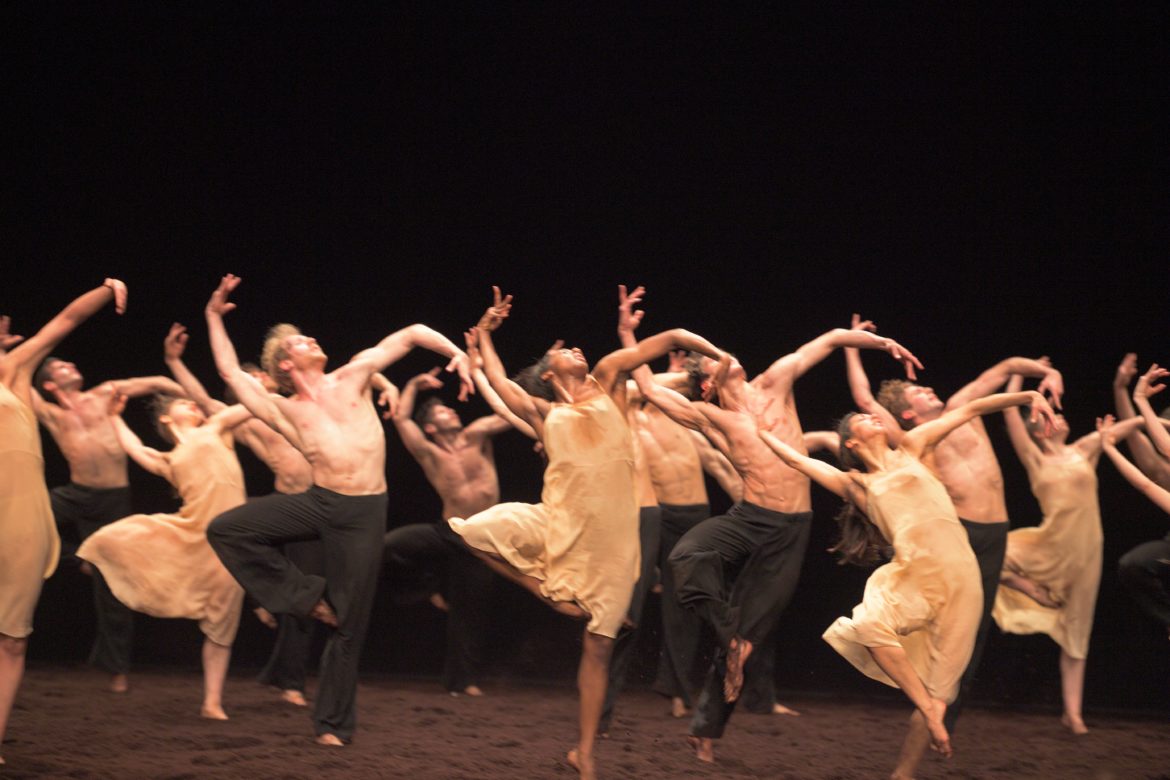English National Ballet’s She Persisted is an outstanding triple bill full of emotion, creativity and a strong compelling female voice.
Tamara Rojo, ENB Artistic Director, stood before the striking colourful curtain created by Grayson Perry, in a full length red gown to dedicate the evening’s performance to recently passed ENB dancer, Kevin Richmond. She spoke from the heart, reflecting on Kevin’s career and on him being “her Priest to her Juliet”. It was a poignant start to the evening.
The curtain raised to the extraordinary Broken Wings choreographed by Annabelle Lopez Ochoad. The quirky and cool piece that tells the story of the tragic life of Mexican painter Frida Kahlo.

I first saw Broken Wings in She Said – Rojo’s first programme of three female choreographers that preceded She Persisted. And while that first experience of seeing Broken Wings can never be replaced, Ochoa’s vision and choreographic talent continues to inspire.
The journey through Kahlo’s life starts with a black box, from which skeletons climb and remain the ever omnipresent darkness to the colourful Latin infused scenes that sees Kahlo happy, sad, loved and broken.
Everything about Broken Wings is unexpected, from the men with coloured torsos wearing long bold coloured skirts, and their heads adorned with antlers, flowers and frills.
Katja Khanlukova’s debut as Kahlo, the role so imprinted by Rojo, must’ve been a nerve-racking experience, but she made the role her own with her heartfelt performance. Broken Wings unfolds with layers of colourful characters that create a surreal and vivid dancescape that’s as brilliant as Kahlo’s stunning paintings, and just as compelling.

The world premiere of Nora, choreographed by Stina Quagebeur, is a deeply moving and absorbing exploration of married life inspired by Nora A Doll’s House by Henrik Ibsen. Crystal Costa was exceptional as Nora and perfectly paired with Jeffrey Ciro and Junor Souza. Costa moved with passion and grace as she poured her soul into the role. Each pirouette and extension was deeply expressive. The piece had the wonderous feeling of an endless pas de deux with Costa and Ciro who were heart melting, making the piece truly hypnotic.
Quagebeur’s choreography reflects the ballet greats that she’s worked with throughout her career including Mats Ek, Wayne Ealing and William Forysthe. She has thread their inspired movements into her own style that is thoroughly absorbing and left me wanting more from this strong female choreographer.

The last piece of the night is one of the most important pieces in the history of dance, created by one of the most acclaimed and influential choreographers of our time, and performed by one of the top ballet companies in the world. It’s a spellbinding combination and ENB’s performance of Pina Bausch’s Le Sacre du printemps (The Rite of Spring) was a thrilling and arresting end to an incredible evening.
Created in 1975, The Rite of Spring is performed on a stage covered in dirt, with 28 barefoot dancers, the women in nude dresses, then men shirtless in black trousers. From the moment the music starts and the light finds a dancer face down in the dirt, to the stage becoming filled with clusters of heart thumping, raw, adrenaline filled visceral dance, this piece is enthralling.
Even after 40 years, The Rite of Spring remains phenomenal and there have been very few pieces created since that have had the same impact on the creation and performance of dance. This piece suits ENB; the company’s core nervous system seemed to be revealed by each dancer individually and as a group collectively. Nothing was held back by the dancers as they embodied Bausch’s distinctive movement; they raged, they ran, they rolled in the dirt until they almost ran out of breath that was so ragged you could hear it at the back of the theatre and matched the heart beating of the audience that roared with applause.

Our tip: Stay seated during the interval and watch the dirt being laid on the stage – it’s not often you see dumpsters of dirt emptied and racked across the floor!
Reviewed at Sadler’s Wells on 4 April.


